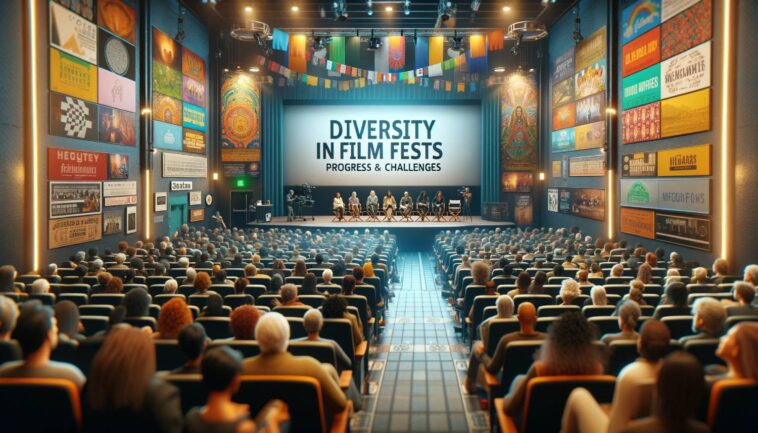In the ever-evolving landscape of cinema, film festivals play a pivotal role in shaping the narratives that reach global audiences. These festivals not only serve as a platform for showcasing cinematic excellence but also hold the power to influence the diversity and representation within the film industry. As societal awareness towards inclusivity has heightened, so too has the scrutiny over film festivals’ commitments to these principles.
Table of Contents
Progress in Diversity and Representation
Recent years have seen significant progress in diversifying festival line-ups, with some festivals taking the lead in promoting inclusivity. The Toronto International Film Festival (TIFF) and the Berlin International Film Festival (Berlinale) have made notable strides by including a wider array of films that represent diverse cultures, genders, sexual orientations, and stories. These festivals have implemented policies to ensure a more inclusive selection process, recognizing the importance of varied perspectives in enriching the cinematic experience for audiences worldwide.
Setbacks and Challenges
Despite these advancements, the journey towards full representation is far from over. Many festivals still grapple with the challenges of systemic biases and unequal access to opportunities for filmmakers from underrepresented communities. Issues of nepotism and favoritism also persist, casting a shadow over the fairness of selection processes. For instance, recent allegations suggest that not all film submissions are viewed with the diligence they deserve, raising concerns about transparency and integrity in how films are chosen for prestigious showcases like the Sundance Film Festival. This incident underscores the ongoing need for vigilance and reform in festival practices to ensure that all filmmakers receive equal consideration.
Leading the Way in Inclusivity
Amid these challenges, some festivals stand out for their commitment to inclusivity. The Outfest Los Angeles LGBTQ Film Festival and the Pan African Film Festival have been lauded for their dedication to showcasing films that highlight LGBTQ and African diaspora stories, respectively, contributing to a more inclusive cinematic landscape.
What More Can Be Done?
To build on the progress made and address the setbacks encountered, film festivals must adopt a multifaceted approach. This includes implementing blind submission processes to mitigate biases, establishing quotas for underrepresented filmmakers to ensure their representation, and creating more opportunities for mentorship and funding for filmmakers from diverse backgrounds. Moreover, festivals should engage in continuous dialogue with communities and industry stakeholders to adapt their practices in response to evolving understandings of diversity and inclusion.
Conclusion
The journey towards achieving true diversity and representation in film festival line-ups is a nuanced and challenging one, marked by both notable progress and persistent barriers. The dedication of leading festivals to fostering more inclusive storytelling marks a significant, promising shift within the industry. These efforts emphasize the critical importance of recognizing and amplifying diverse narratives, ensuring equitable opportunities for all filmmakers. As the film industry continues to evolve, it has the potential to not only mirror the multifaceted nature of human experience more accurately but also to act as a catalyst for broader societal change, inspiring inclusivity and understanding beyond the confines of cinema. This ongoing commitment to diversity and representation is crucial for the enrichment of the film landscape and for encouraging a more empathetic, inclusive world.

